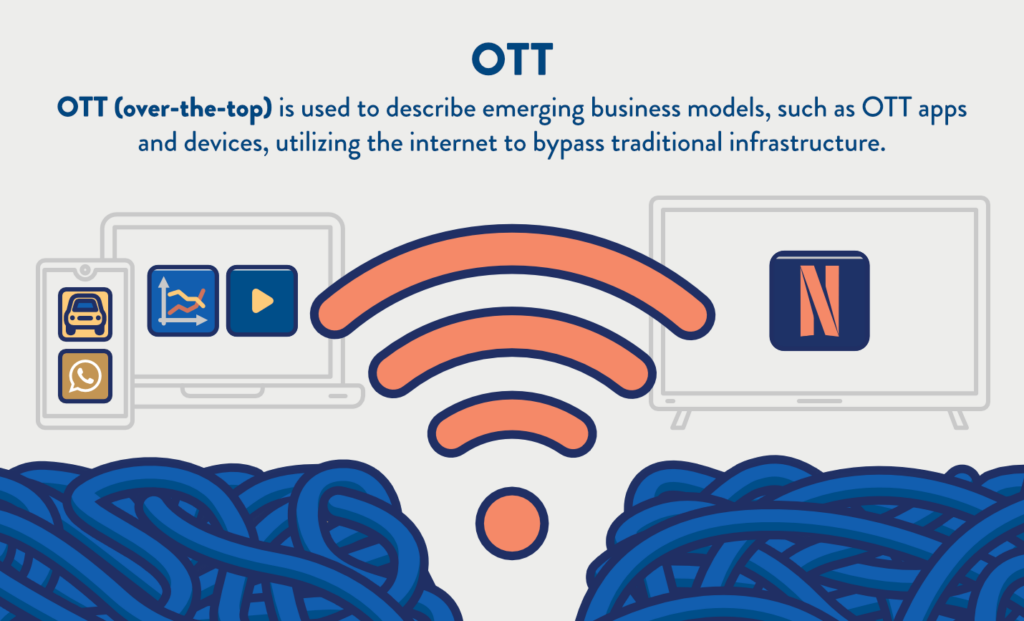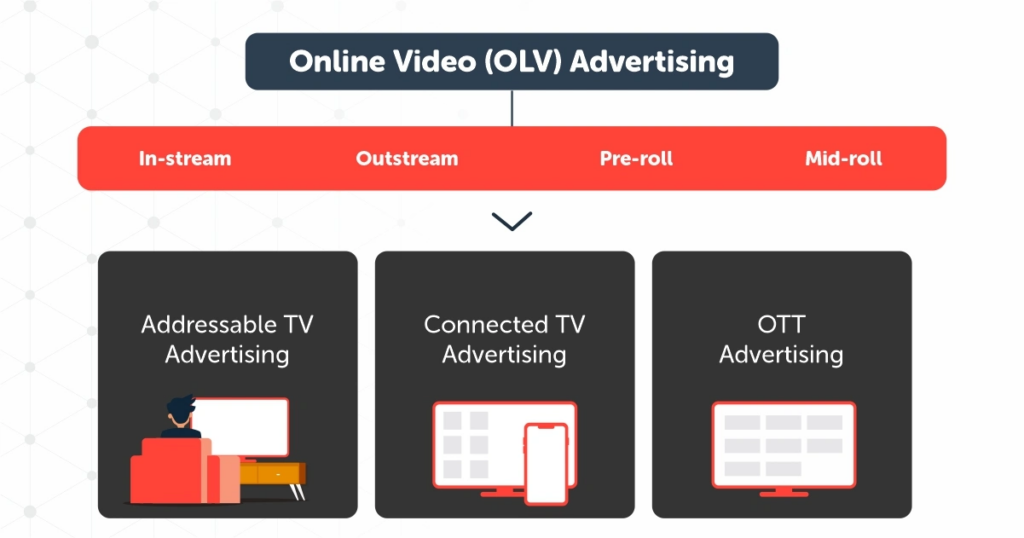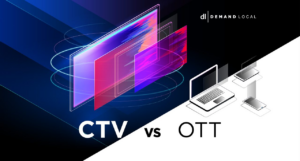OTT streaming refers to the delivery of film and TV content via the internet, without requiring users to subscribe to a traditional cable or satellite pay-TV service.
OTT platforms allow users to directly access media content on demand via apps on connected devices like smartphones, tablets, smart TVs, gaming consoles, and streaming devices like Roku.
Major OTT providers include Netflix, Amazon Prime Video, Hulu, Disney+, Apple TV+, HBO Max, and many more.
The growing popularity of OTT has disrupted traditional pay TV and fueled the rise of Internet TV and on-demand content.
This article explores the evolution of OTT, its business models, major players, pros and cons for consumers, and its impact on the media landscape.

The Evolution of OTT Streaming
The concept of OTT emerged in the late 1990s once internet speeds became fast enough to stream video content.
Early OTT efforts included MLB.tv for live baseball in 2002 and Netflix’s streaming service introduced in 2007.
However, OTT didn’t gain major traction until the 2010s with the rise of smartphones, tablets, smart TVs, and streaming devices like Chromecast, Roku, and Apple TV.
This allowed consumers to easily access OTT services on their TVs without a cable or satellite box.
Major milestones in OTT history include:
- 2011 – Hulu launches its subscription OTT service Hulu Plus
- 2013 – Netflix releases the political drama House of Cards, the first high-profile original exclusive to an OTT service
- 2014 – CBS launches its standalone OTT service CBS All Access
- 2015 – Dish Network launches Sling TV, one of the first live TV OTT services
- 2016 – HBO Now launches to provide access to HBO without a cable subscription
- 2019 – Apple TV+ and Disney+ launch to compete with established players like Netflix and Amazon Prime Video
This rapid growth demonstrates how OTT has disrupted traditional pay TV and become a preferred way for consumers to access entertainment content on demand.
OTT Business Models
There are several business models that OTT service providers use to monetize their content:
- Subscription – Services like Netflix, Amazon Prime, Hulu, and Disney+ charge a flat monthly fee for access to their content libraries. This gives unlimited on-demand access.
- Transactional – Services like Apple’s iTunes allow users to purchase or rent movies, TV shows, and other content a la carte. This model provides more flexibility but costs more per view.
- Ad-supported – Services like Tubi TV and Pluto TV show ads during programming, allowing them to offer free access to their content libraries. However, the ads can be intrusive.
- Live TV – Services like YouTube TV, Hulu Live TV, and Sling TV offer live streams of popular cable channels for a monthly fee. They provide a cable-like experience delivered over the top.
Many services use a combination of models, such as Hulu which offers ad-supported and subscription options.
OTT providers continue to experiment with pricing and packaging models to maximize revenue while attracting and retaining viewers.

Major OTT Players
Some of the major OTT streaming services and providers today include:
- Netflix – The dominant global subscription service with over 200 million paid members in 190 countries. Offers original content & movies/TV shows.
- Amazon Prime Video – Bundled with an Amazon Prime subscription. Large content library boosted by Amazon Studio productions.
- Hulu – Popular for its huge back catalog of TV shows, along with some original content. Has live TV add-ons.
- Disney+ – Features Disney, Marvel, Star Wars, Pixar, and National Geographic titles. Rapidly growing subscriber base.
- Apple TV+ – Ad-free subscription service focused on Apple’s portfolio of exclusive original content.
- HBO Max – Subscription service with content from HBO, Warner Bros., DC, and more. Has new movie releases.
- Peacock – Ad-supported and subscription options from NBCUniversal with NBC and classic TV shows.
- Tubi/Pluto TV – Free ad-supported services offering a wide selection of movie/TV libraries. Owned by Fox and ViacomCBS.
Many tech giants and media conglomerates are investing heavily in their own OTT services, rapidly changing the streaming landscape.
Benefits of OTT for Consumers
The rise of OTT streaming has provided many benefits to consumers looking to access entertainment content:
- On-demand access – Viewers can watch their desired content whenever they want, rather than at scheduled times.
- Portability – OTT apps allow you to access content on smartphones, tablets, laptops, etc when on the go.
- Customization – Services allow you to create user profiles to get personalized recommendations based on your viewing history and tastes.
- Cost – OTT can provide more flexibility and lower costs compared to expensive, rigid cable TV packages with channels you don’t watch.
- Library size – Many OTT services boast huge libraries with thousands of titles available. Great for binge-watching.
- Original content – Services like Netflix, Amazon, and Apple are spending heavily to produce exclusive original shows and movies.
- Live TV options – Services like Hulu Live provide live cable channel streams for news, sports, etc without needing a cable box.
Challenges of OTT for Consumers
However, OTT streaming also comes with some downsides for consumers:
- Subscription costs – Having multiple services adds up quickly. There’s also membership churn as hot shows move between platforms.
- Content fragmentation – Popular shows and movies are spread across different services. May need multiple subscriptions.
- Internet required – OTT services require fast, reliable internet which is not available everywhere. Can consume data caps.
- Interface issues – With libraries so huge, finding the content you want can sometimes be difficult for some services.
- Advertising – Many free or lower-cost OTT options show ads which can negatively impact the viewing experience.
- Limited availability – Some services restrict or delay access to certain content in different countries due to licensing issues.
- Changing content – Movies/shows can unexpectedly depart a service due to licensing expirations.
Impact on the Media Landscape
The meteoric rise of OTT has had major implications across the media industry:
- Cord-cutting – Millions of consumers are canceling expensive cable/satellite TV bundles in favor of cheaper OTT options. Pay TV subscriber numbers are declining.
- Diminished ad revenue – Traditionally TV advertising time sold by networks is becoming less valuable as audiences shift to ad-free or limited ad OTT environments.
- TV paradigm shift – Shorter seasons, high production values, serialized storytelling, and binge-watching have become common as services aim for prestige shows that attract and retain subscribers.
- Disrupting film release windows – Some OTT services are releasing films direct-to-streaming, bypassing the traditional theatrical window completely. Angering theater owners.
- Leveling the playing field – OTT provides an opportunity for new voices/creators to have their content seen widely if picked up by a popular service.
- Changing business models – Media companies are shifting their focus and structure to align with the direct-to-consumer OTT distribution model.
OTT has disrupted how audiences view content and upended existing media industry conventions and power dynamics. OTT’s prominence will only grow in the years ahead.

Frequently Asked Questions (FAQ)
Q1. What does OTT mean?
Ans. OTT stands for “over-the-top” and refers to the delivery of film/TV content over the internet directly to consumers, without requiring a cable or satellite subscription. OTT bypasses traditional distribution.
Q2. How does OTT streaming work?
Ans. OTT services allow users to access their libraries of content via apps on internet-connected devices. The video is delivered data packets over the internet, rather than a broadcast signal over cable/satellite networks. High-speed broadband is required.
Q3. What are the most popular OTT platforms?
Ans. The top OTT platforms worldwide include Netflix, Amazon Prime Video, Disney+, Apple TV+, Hulu, and HBO Max. YouTube TV and Sling TV are popular live TV OTT options. Regional services like Hotstar, JioPlay, and iQIYI serve large non-US audiences.
Q4. Is OTT streaming legal?
Ans. Yes, using licensed OTT streaming services like Netflix or Hulu is completely legal in most countries. However, piracy of copyrighted shows via illegal streaming sites is illegal. OTT services use DRM and geo-blocking to follow content license limitations.
Q5. Which is better – Satellite, Cable, or OTT?
Ans. It depends on your preferences. OTT offers more flexibility, lower cost, and on-demand access. But satellite/cable may offer more channels, reliable quality, and live event access. Many consumers use a combination of OTT with a more basic/cheaper cable TV subscription.




